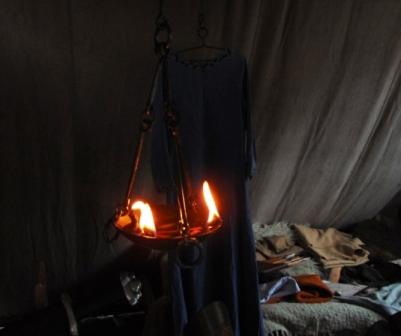Until the first century after the Middle Ages (16th century) for lighting were used also small flat trays filled with animal fat and containing a wick. This functioned as a candle.Lamp comes from the Greek lampas that means light, torch. The first stone lamps date approximately 20.000BC.
 There are several recipes on how the oil is cleaned. Mix with salt, sand and water, the mixture settle, draining and filtering is one of them. Cold pressed oil produces less smoke. Little or no refined oil did clog the wick causing the flow to the flame more difficult. The result: a lot of smoke and the flame extinguishes.
There are several recipes on how the oil is cleaned. Mix with salt, sand and water, the mixture settle, draining and filtering is one of them. Cold pressed oil produces less smoke. Little or no refined oil did clog the wick causing the flow to the flame more difficult. The result: a lot of smoke and the flame extinguishes.
During burning the charred portion of the wick should be trimmed regularly (sniffing or coal throttling) to minimize the smoke.
To catch dripping oil from the wick two mating tanks were developed.
A further improvement was to shut the lamp with a lid.
A polished reflector behind the flame can focus light more efficiently.
Late 18th century, the hollow wick was introduced as also the glass chimney that protects the flame and as chimney creates oxygen flow.
In China, there were BC already non combustible gas mantles of asbestos, which could be used forever. They even made double walled lamps whose partition was filled with fresh cooling water, so that the oil used is not needlessly vaporized. This enabled them to save 50% of their oil!
A candle can light thousands of candles without shortening her own life.
